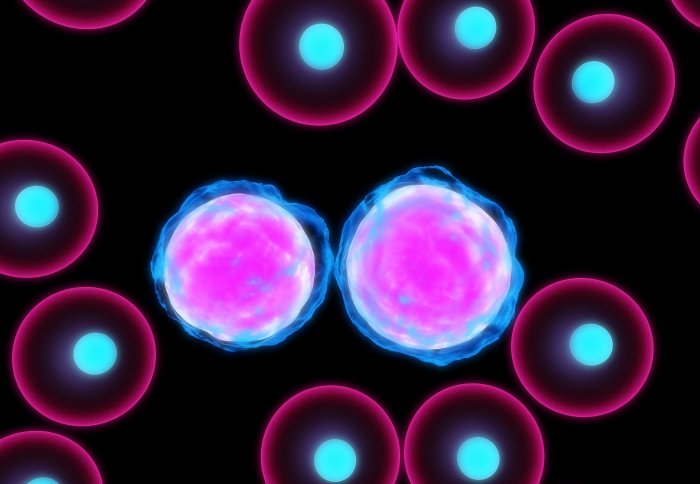

Modelling the interaction between diseased and healthy cells could provide new insights into how cancers develop, according to new research.
Healthy and cancerous cells are locked in a battle for the finite resources that are essential for their growth. Research into cancers tends to focus on examining the behaviour of tumour cells, but this new work provides ways of modelling the interplay between healthy and cancerous cells, which also affects how cancers progress.
The Imperial researchers used three mathematical models based on blood data from 69 patients with the blood cancer chronic myeloid leukaemia, who had been followed for a period of six years. Two of these models included data about the competition between a patient’s healthy and cancerous cells, while the third model took no account of this interaction. The researchers then assessed the accuracy of the different models by comparing the results of the modelling with real-life patient outcomes.
Modelling gives us a useful tool for understanding leukaemia that we hope could ultimately play a part in designing new treatments that target the right cells and processes
– Adam MacLean
Department of Life Sciences
When competition between healthy and cancerous cells was included in the modelling, the results reflected how a patient responded to treatment more accurately than when this interaction was not included in the calculations. The research is published this week in the journal Proceedings of the National Academy of Sciences.
Adam MacLean, from the Department of Life Sciences and lead author of the research said: “This study suggests that taking account of the competition between healthy and cancerous cells is crucial if you want to get a full picture of how the disease affects patients and how individual patients are likely to respond to treatments. Modelling gives us a useful tool for understanding leukaemia that we hope could ultimately play a part in designing new treatments that target the right cells and processes. The current modelling involved a relatively small number of patients and it is specific to one form of leukaemia. However, the cellular processes that we studied are general, so this work has the potential to also prompt new insight into other cancers.”
Leukaemia is a cancer of the white blood cells, which upsets cell production in the bone marrow. The new study looked at chronic myeloid leukaemia, an uncommon form of the disease that affects around 600 people in the UK each year. However, the researchers hope that their new findings could also help researchers looking to understand the workings of other cancers.
Once information about competition was included in the modelling, researchers were able to unpick which factors most affected how the cancer progresses. The models made different predictions: one suggested that the growth rate of leukaemia stem cells is the most important factor, whilst the other suggested that the death rate of another cell type, progenitor cells, is more important. Future work will test these hypotheses to discriminate between them and help the researchers to better understand how leukaemia works.
Reference: MacLean, A et al. 'The ecology in the hematopoietic stem cell niche determines the clinical outcome in chronic myeloid leukemia'. PNAS, 25 February 2014.
Article text (excluding photos or graphics) available under an Attribution-NonCommercial-ShareAlike Creative Commons license.
Photos and graphics subject to third party copyright used with permission or © Imperial College London.
Reporter
Gail Wilson
Communications and Public Affairs

Contact details
Email: press.office@imperial.ac.uk
Show all stories by this author




Leave a comment
Your comment may be published, displaying your name as you provide it, unless you request otherwise. Your contact details will never be published.